Targa tragedy: Survivor attempted to get help, report finds
It’s been revealed nearly 60 competing cars drove past the location of a crash where a driver died at a Targa Tasmania event in April.
Tasmania
Don't miss out on the headlines from Tasmania. Followed categories will be added to My News.
Nearly 60 competing cars drove past the location of a crash where a 68 year old driver died at a Targa Tasmania event at Arrowsmith near Strahan in April.
Shane Navin died after losing control of the vehicle, before it went off road and rolled six metres before coming to rest upside-down in a creek.
A report into the tragedy looked at the inability of the co-driver to obtain assistance, noting several cars drove past.
“This raises the important question of why it was that almost 60 competing cars went past the location of the crash of car 602 yet none of their crews were able to be utilised in any rescue attempt,” the report said.
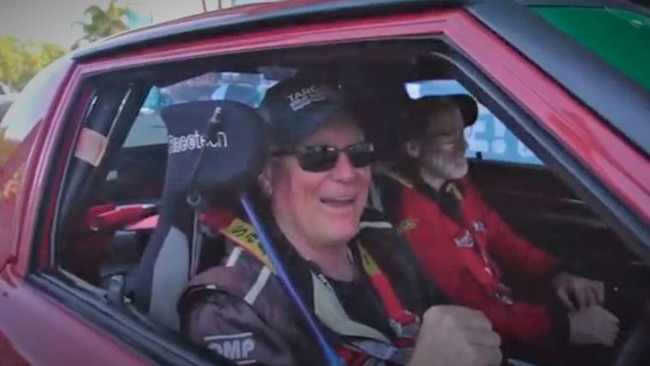
“It is highly likely that at least 4 cars would have driven past the location within the 2 minutes following the incident.”
The report said crews would not have been able to see the car.
Drivers involved in a crash are required to immediately exit the vehicle, if possible, and put out safety triangles to warn oncoming cars.
Crews are equipped with signs required to be displayed, including an “OK” sign to signal cars may pass and an “SOS” sign to show drivers must stop and assist.
“Very importantly, this procedure demands that if a crew sees a stopped car on a stage and no OK or SOS sign is displayed and no safety triangles have been put out, they must stop at the stopped car on the assumption that the reason why no OK sign is displayed is because the crew are trapped or injured,” the report said.
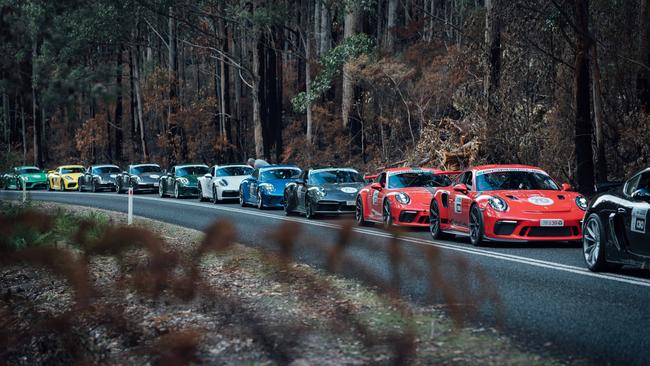
The report said crew are routinely briefed on this procedure, but due to Covid restrictions there was no crew briefing to Targa Tasmania 2021.
Instead a prerecorded video, which included the safety procedure was sent to competitors but there was no system of confirming crews had actually watched it.
The co-driver of the vehicle, Glenn Evans, who sustained minor injuries had attempted to save Mr Navin but was unsuccessful.
The report said Mr Evans climbed to an embankment to the roadway and attempted to flag down a driver, but none stopped.
“The crew of cars which passed the incident gave evidence that they saw a person in a race suit waving their arms but did not interpret it as a call for assistance, rather a gesture to keep going,” the report said.
“The Tribunal accepts that the co-driver was in an extremely stressful situation and also that the OK/SOS board may not have been easily removed from the car,” the report said.
Recommendation 15 of 23 said an easily recognisable sign needed to be agreed on and suggested using crossed arms as a signal.
Rally champ: ‘You’re never going to stop accidents’
A TWO-time Targa Tasmania champion says the elimination of high-speed “air time” and the scrapping of sections with sharp corners at the end of fast straights will make Targa Tasmania a safer event and save lives.
Queenslander Tony Quinn, who won Targa driving a fire-breathing Nissan GT-R and a McLaren 650s supercar, said every competitor understood and accepted the risk of motorsport events and accidents were inevitable.
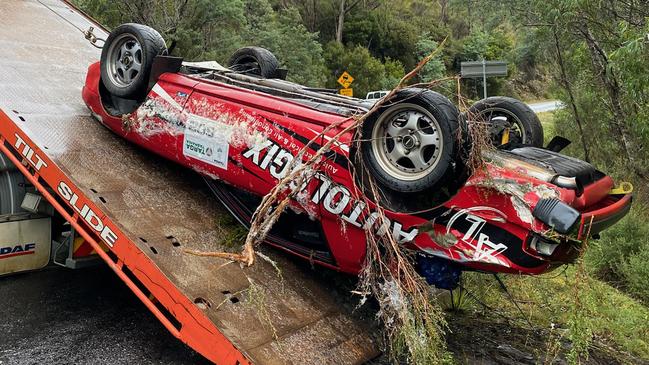
Quinn applauded the 23 changes resulting from Motorsport Australia’s investigation into the circumstances surrounding the triple fatality 2021 Targa Tasmania.
He even made a submission to the Investigatory Tribunal and numerous suggestions were considered in the changes.
Of the main changes, the banning of sections where the fastest cars could become momentarily airborne was a key safety improvement.
“I’ve just finished doing Targa in Cairns and they have already implemented safety improvements on the course,” Quinn said.
“Anywhere cars can do high speed and potentially jump or become unstable, or there’s a bad corner at the end of a straight, they have put in speed zones to slow down the field and save people getting out of control.”
NSW driver Shane Navin died in Targa Tasmania in April when his Mazda RX7 crash into a creek on Mt Arrowsmith stage near Queenstown, and the next day local driver Leigh Mundy and his Queensland navigator Dennis Neagle died when their Porsche hit a tree on the Cygnet stage.
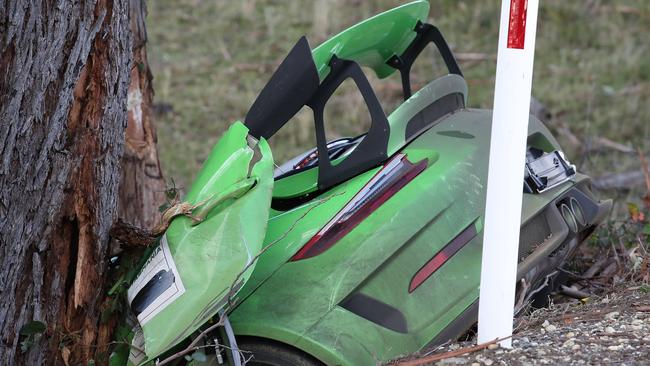
“You are never going to stop accidents but there will now be more opportunity for competitors to take better care of themselves out there on the road, and hopefully stop fatalities,” Quinn said.
With the future of Targa Tasmania, Quinn says the show must go on.
“There is a resounding support for it to continue,” he said.
“It is such a great event, not just for the competitors, but it’s an iconic event and great for Tasmania.
“It’s one of the best events I do, and I do plenty.
“We know there are risks when we are on the road, whether it is in a motorsport event or just anyone on the road every day. Accidents happen no matter how many safety measures you have in place.”
The 23 recommendations focused on key areas where safety can be improved, including the management high terminal speeds and average speeds achieved at each event.
Key recommendations:
- Consideration of jumps and other course design features
- Changes to address driver fatigue, skills, licensing and complacency
- Ensuring car set ups are fit for purpose
- The better use of technology and existing safety equipment
- Improved event communications
- Managing ‘missing’ cars during events
Targa fatalities spark major changes to future events
Changes to speed limits and measures to mitigate driver fatigue are among 23 recommendations which will be implemented at future Targa Tasmania events, after three drivers died in April this year.
A tribunal, chaired by the Australian Institute of Motorsport Safety, made several recommendations in relation to speed, including that organisers avoid sections of road where speeds of up to 200km/h can be achieved when designing the route and that no Targa stage be permitted to have an average speed exceeding 132 km/h.
It’s also been recommended restricted time zones be implemented prior to potential hazards, which means cars will no longer be able to get “air”.
The tribunal also recommended organisers design routes “which has variants in both stage and itinerary design”, in order to address driver complacency with those who become over familiar with the route.
Scheduling changes will also be implemented to ensure drivers have time to carry out appropriate checks on their vehicles.
All 23 recommendations were accepted by Motorsport Australia, with the sporting body committing to implementing the recommendations by March 1.
The report released on Thursday also outlined a number of contributing factors leading up to both incidents.
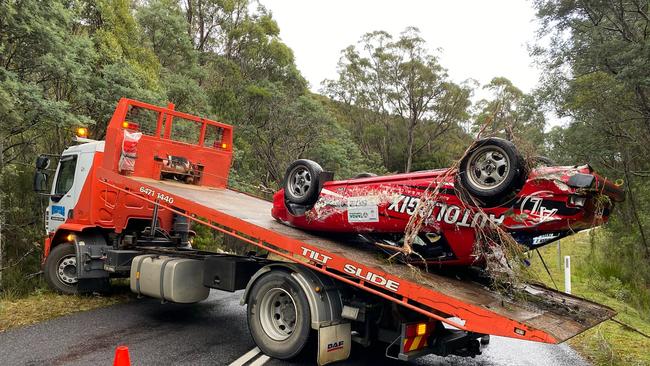
The Targa Tasmania event ran across six days in April, covering over 2000 kilometres.
On April 23, 68 year old competitor Shane Navin died while competing in stage 26 of the event at Mt Arrowsmith, near Strahan.
The report said Mr Navin lost control of the vehicle, resulting in it going off road and rolling six metres into a creek before coming to rest upside-down, with the driver’s side fully submerged.
The co-driver, 60 year old Glenn Evans sustained minor injuries but survived.
In the minutes that followed, Mr Evans attempted to save the driver before flagging down a vehicle, but assistance was not provided for more than half an hour.
The report found it had rained at Mt Arrowsmith and that there were “a number of unprotected hazards” such as trees along the 52 kilometre stage, both of which were identified as contributing factors to the crash.
It also said the driver’s driving ability and poor suspension set up were contributing factors to the incident.
On the final day of the motorsport event 68 year old driver Leigh Mundy and his co-driver 59 year old Dennis Neagle were competing in stage 33 at Cygnet when the car approached a crest in the road after reaching a speed of 188km/h and became airborne.
The car left the road and crashed into a tree.

Both men died at the scene and the remaining four Targa stages were cancelled.
The report raised questions about the suspension of the vehicle.
“The driver of car 902 told him that he would have to withdraw from the event if he did not get new suspension for the car, as ‘the car was behaving like a pogo stick’,” the report said.
“The Tribunal considers it highly unlikely that it was.”
Driver fatigue and a tighter event schedule were found to be contributing factors to both crashes, with the report noting drivers were allowed less time on touring stages.
“These, combined with the pressure of competition over significant distances each day, and early starts, in the view of the Tribunal, meant that drivers (and probably co-drivers) would most likely have been fatigued in the latter half of the event,” the report said.
RECOMMENDATIONS
Targa Australia CEO Mark Perry said 23 recommendations after the deaths of three drivers in April would affect Motorsport across Australia.
“Seven or eight pertain particularly to Targa Tasmania but the other 15 or 16 are sportwide recommendations around licensing, car set up, car check in, pre-event, all things not controlled by us,” Mr Perry said.
Mr Perry said the majority of drivers would not be affected by speed changes.
“This year 2 thirds of the field will be going less than 130km /h,” he said.

“Less than 10 per cent of the field will be impacted by these speed changes.”
He said managing speeds would not be a case of penalising drivers.
“It’ll come down to course design in terms of managing speeds,” he said.
“The cars historically, in the full competition at least, have gone as fast as the roads will allow them.”
Mr Perry said despite the incidents, there’s still a love for motorsport across the country.
“The reality is, inquiries for Targa are actually up, people still love Targa Tasmania.
An event for Targa Tasmania’s 30th anniversary will be held in March.




